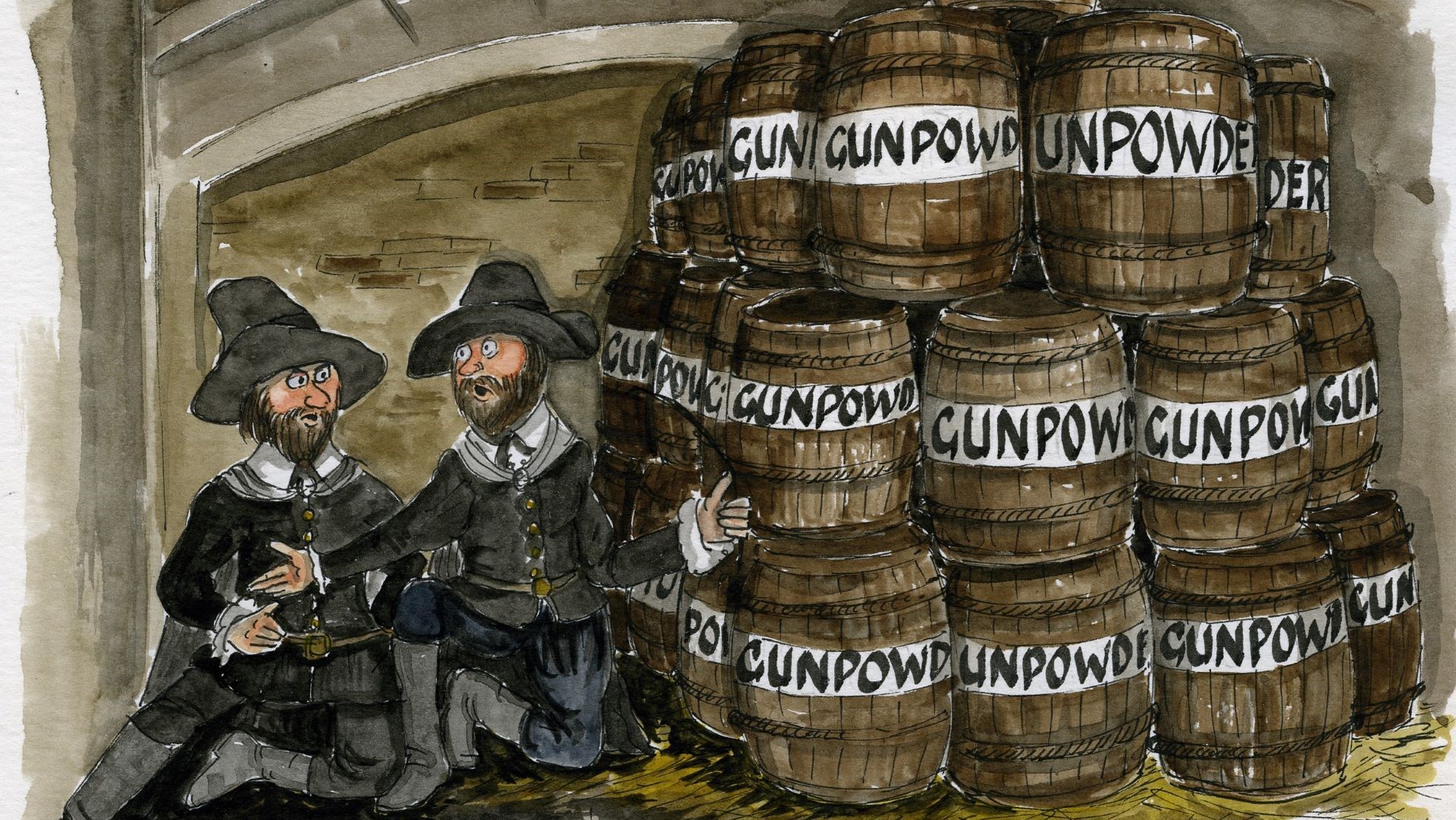Who was Guy Fawkes and how did he die? We have all the answers for curious kids
Who was Guy Fawkes? Find out with our kid-friendly guide to the history of Guy Fawkes and his grisly ending.

Every year people wonder who was Guy Fawkes and how did he die, so we have pulled together all the firework facts for you right here, you're welcome.
Guy Fawkes was a man who tried to blow up Parliament a long time ago on November 5th but didn't succeed. His story is remembered every year in England with Bonfire Night celebrations.
If your little one is wondering why Guy Fawkes's name comes up at this time every year, we reveal the man behind the mask, plus his grisly end. Kids love learning new amazing facts, jokes and riddles, so feed your young historian’s enquiring mind with our quick and easy guide.
In this article we discover why Guy Fawkes planned to blow up the Houses of Parliament, how he was found out, and why some sources believe he may have jumped to his own death to avoid a particularly gruesome ending.
Who was Guy Fawkes?
Guy Fawkes (born 1570 - died 1606) was an Englishman famously known for his involvement in the Gunpowder Plot, a failed conspiracy to blow up the House of Lords in the Palace of Westminster in London on November 5, 1605. The plot's aim was to assassinate King James I of England, along with many members of Parliament, in an effort to restore Catholic rule in England.
Guy Fawkes was a key member of a group of conspirators who planned to ignite barrels of gunpowder stored in a cellar beneath the House of Lords during the State Opening of Parliament. The plot was discovered when an anonymous letter was sent to a Catholic member of Parliament, prompting a search of the premises shortly after midnight. Fawkes was discovered in the cellar with a fuse, matches and 36 barrels of gunpowder.
In the centuries that followed, November 5th, the date of the Gunpowder Plot's discovery, became known as Guy Fawkes Night or Bonfire Night in the United Kingdom. It is marked by bonfires and fireworks displays, and straw versions of Guy Fawkes, often called "Guys," are burned on the bonfires.
Parenting advice, hot topics, best buys and family finance tips delivered straight to your inbox.
Guy Fawkes has also become an unlikely symbol of anti-establishment and rebellious movements. The graphic novel and film adaptation "V for Vendetta" features an anti-hero who wears a Guy Fawkes mask. Protesters across the world have taken to wearing the same mask as a symbol of defiance.
How did Guy Fawkes die?
The celebrations on bonfire night may lead many to believe that Guy Fakes was burned at the stake. In fact, Fawkes and his surviving co-conspirators had a much more grisly end.
After being captured, Guy Fawkes was tortured. It’s likely that his torturers used ‘the rack’, an agonising device that pulled limbs from the body until they were dislocated or separated. Despite holding out for several days, Guy Fawkes eventually named his co-conspirators and signed a confession, sentencing himself and three other surviving men to death.
On the 31st of January 1606, Fawkes and his co-conspirators were dragged behind a horse along the muddy streets of London to the gallows, where they were to be hanged, drawn and quartered.
Hanging, drawing, and quartering was a brutal method of execution used in England for crimes of high treason. It was intended to be a particularly gruesome and public form of punishment, usually reserved for those who plotted against the monarch or engaged in acts of political or religious rebellion.
The process of hanging, drawing, and quartering involved the following steps:
- Hanging: The person would be hanged by the neck, but not to the point of death. After a short period of hanging, the person was cut down while still alive.
- Drawing: After being cut down, the person would be disembowelled or have their entrails removed while still alive. This was a gruesome and agonising process.
- Quartering: Finally, the body would be quartered, which meant it was divided into four parts. The limbs (arms and legs) were usually severed from the torso. The quarters were often displayed in public areas as a gruesome warning to potential traitors.
Fawkes was the last to go to the gallows to meet his grisly end. However, he broke his neck during the hanging part of his punishment, ending his life before the more gruesome drawing and quartering. While some sources claim he was so weak from torture that he fell from the scaffolding, others claim he jumped deliberately. Either way, it appears Guy Fawkes managed to avoid the agonising death of the other conspirators.
If you have a little one who just loves to ask questions about EVERYTHING, we've got the parenting guides to help you out. From how many reindeer Santa has and where Halloween celebrations come from, to why we have bonnets and bunnies at Easter.
Joanne Lewsley is mum to a tween, and freelance copywriter and editor who creates parenting, health and lifestyle content for evidence-based websites, including BabyCentre, Live Science, Medical News Today and more.